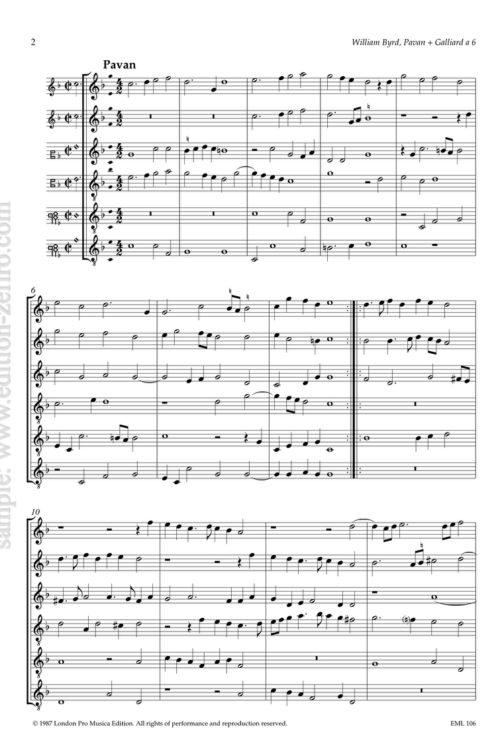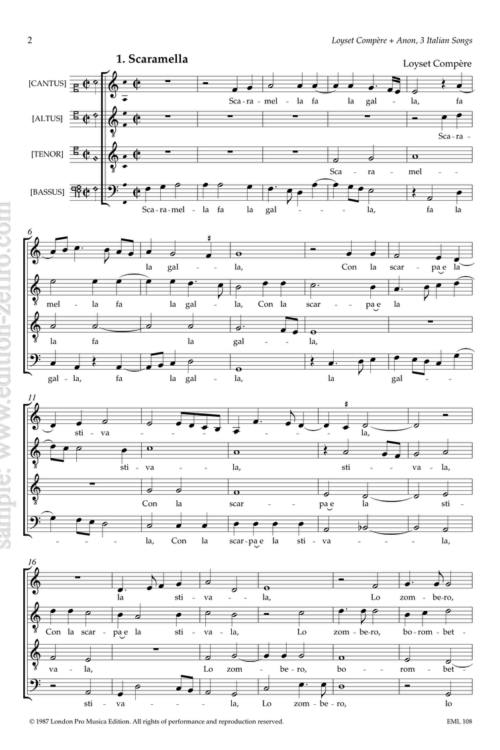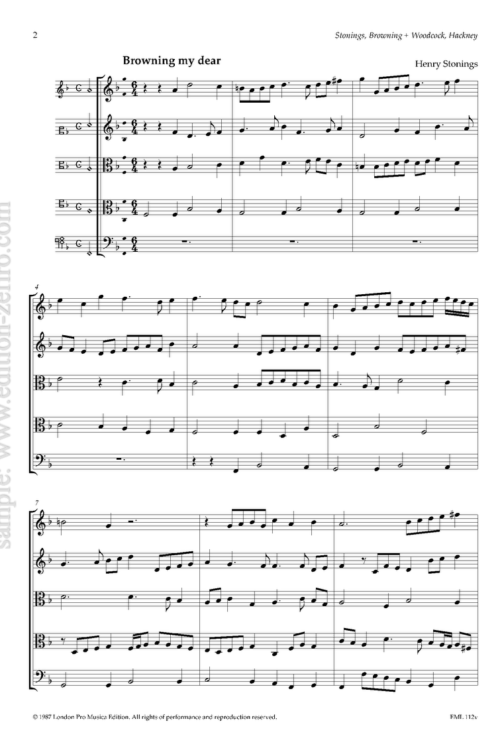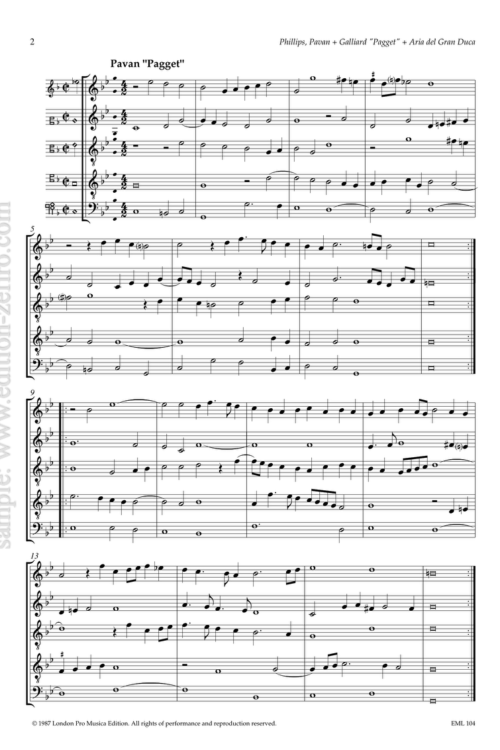A lively selection of pieces from Tielman Susato’s famous Danserye,
transposed up for a normal SATB consort.
Susato’s excellent dance arrangements have, of course, long been popular with recorder players, and are now available in a complete edition (with sensible barring) published by London Pro Musica Edition (LPM 101 ↣). From the point of view of recorder players a problem is that many of the pieces are written at a low pitch, which is ideal for such early wind instruments as crumhorns, curtals, sackbuts etc., but which is unsuitable for the average recorder consort. The question of why the pieces appear so low is very complex, but we know that musicians of the day were used to transposing up or down by a fourth or a fifth. So the written pitch should not mislead us into musical nonsense! All the pieces included in this little volume have been transposed up where necessary, partly so that they can be played on a normal consort, and partly so that they sound bright and clear, like dance music should.
In arranging these pieces for recorders, I have from time to time taken liberties with Susato’s part-writing, so as to get a balance between the parts that is more suitable for recorders. Sometimes the part-writing in the inner parts has been altered so that the alto part can play in a more effective part of its range. Occasional bass notes have been put down an octave, to give a more sonorous chord at the end of a phrase; the top part is, however, exactly as in the original. I make no apologies for “tampering” with the original, as I feel convinced that sixteenth-century musicians would have had the sense to adapt the written notes according to the instruments available, and anyway a facsimile is now available (Alamire, Peer, Belgium). Susato’s original note values have been divided by two in all duple-time pieces and in nos. 10, 24 and 25, and by four in the remaining triple-time ones.
Editorial accidentals are printed in brackets. In La mourisque I have supplied a second-time bar at the end of the first section to avoid having the second section displaced by half a bar, which is what we find in the old Giesbert editions of Susato’s collection. This interpretation fits in with the choreography given for the dance in Arbeau’s Orchésographie.
The terminology used by Susato for the kinds of dances is a little different from that used in other dance collections of the time. He uses “ronde” for branle; “bergerette” means a basse danse, according to his index; a “reprise” is normally another section of a basse danse, so presumably goes at the same tempo. La mourisque is a Morris dance. For more information about dance music of Susato’s day, I would refer you to The Renaissance Dance Book by Bernard Thomas and Jane Gingell. Several of the more courtly dances, i.e. pavanes, galliards and basse danses, were based on well known chansons of the period, which appeared in print in the 1530s and 40s. Nos. 1 and 3 were based on pieces by Claudin de Sermisy (1490-1562); no. 13 on Pourquoy donc ne fringuerons by Passereau; no. 14 on the famous chanson of Clément Janequin (1485-1558), no. 15 on a piece by Jean Courtois, and no. 20 on a small masterpiece by Josquin des Prés (1440-1521), which can, incidentally, be found in The Consort Collection, Volume I ↣. No. 19 was an exceptionally famous allemande, often called “Allemande prince”, and no. 21 employs a famous ground bass, the passamezzo antico.
Dance pieces are usually meant to be played several times, and Susato’s are no exception. Simple percussion can be a great help to provide variety. Don’t forget also that most of the tunes (the top part except for the 2nd Recouple to no.19) in Susato are valid in their own right; so if you are going to do a long version of a dance, you can start with the melody, with or without percussion, then add the bass, and finally the inner parts. In my experience the greatest difficulty with amateur groups playing dance music is coping with the discipline of an unvarying beat; so make sure that your breaths are taken out of the written notes, and that each four-bar phrase begins exactly on the down- beat!
(Larry Bernstein)
- Bergerette “Dont vient cela”
- Reprise
- Reprise “C’est une dure despartie”
- Reprise “Le cueur est bon”
- Bergerette
- La mourisque
- Rond
- Rond
- Saltarelle
- Den hoboecken dans
- Quatre Branles
- Fagot
- Ronde “Pourquoy”
- Ronde “Il estoit une fillette”
- Pavane “Si par souffrir”
- Allemande I (& Recoupe)
- Allemande 3
- Allemande 5
- Allemande 8 (with Recoupes 1 & 2)
- Pavane “Mille regretz”
- Pass et medio
- Reprinse “Le pingne”
- Pavane “La bataille”
- Gaillarde “Le tout”
- Gaillarde “Mille ducas”






